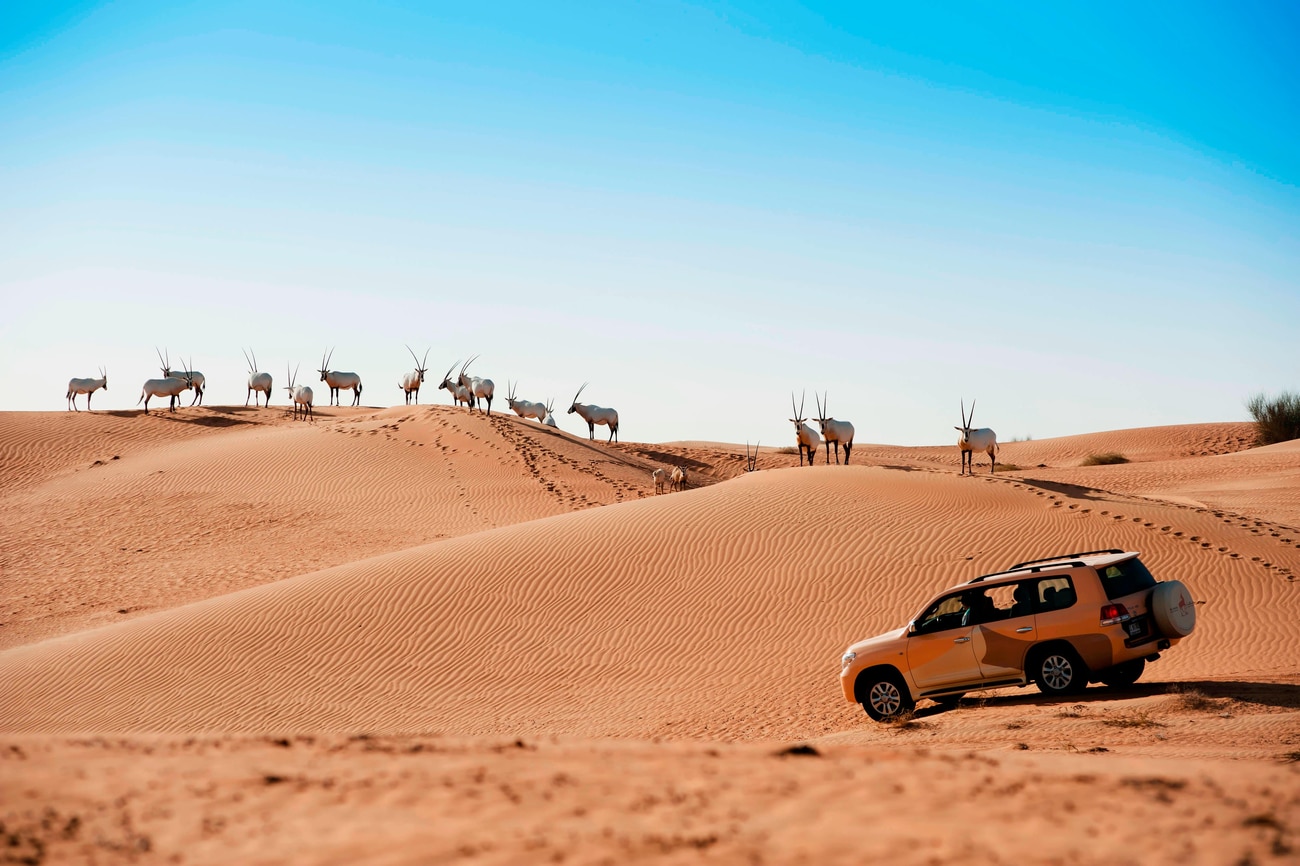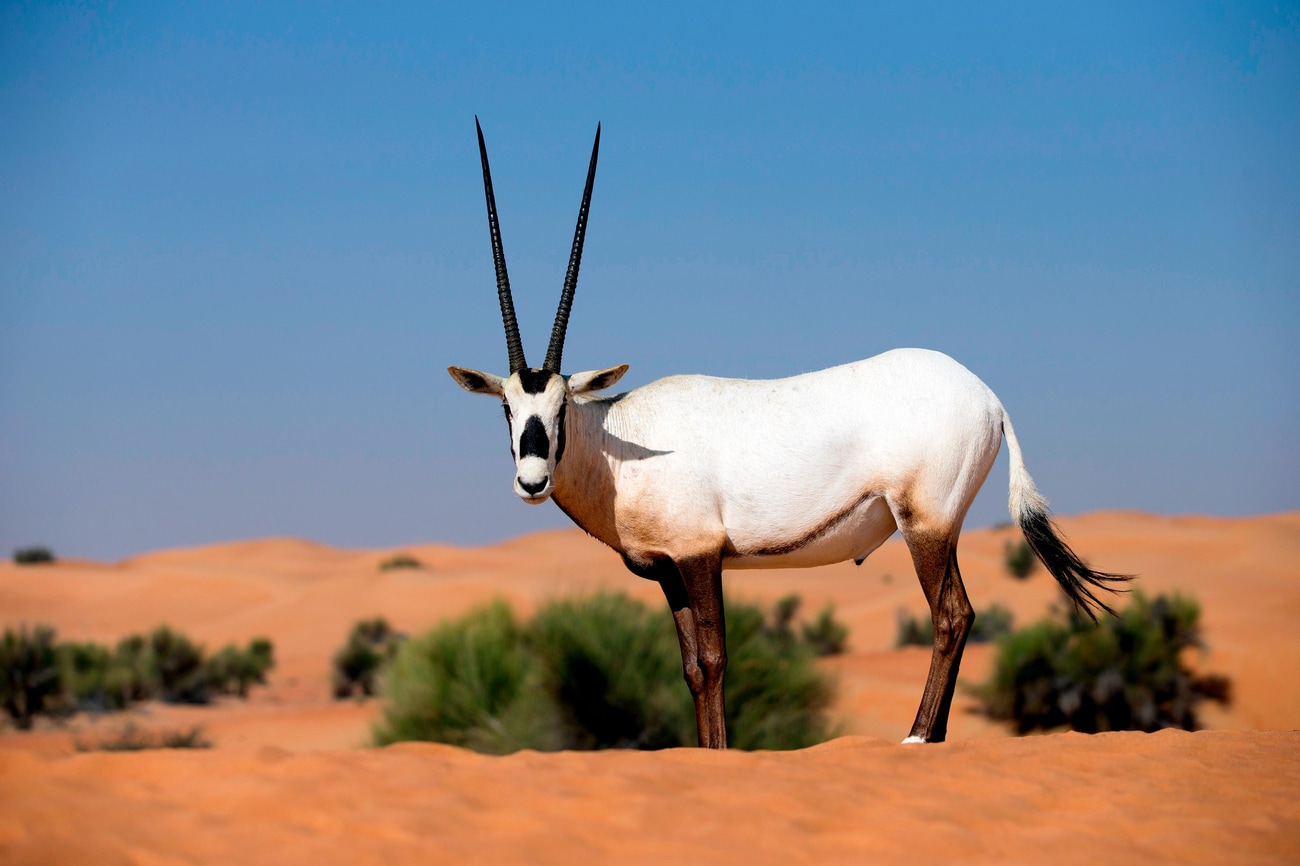Old men told of this place where water flowed from a rock, the perpetual spring fed by ancient underground lakes. Birds gathered in the dense trees, Gazelle hid from the shimmering heat under matted palms, and occasionally even the hardened, elusive Arabian Leopard was seen in the distant mountains.
The desert is an unforgiving place to those who cannot read its signs or understand its subtle warnings. Without the grasses or the palms, the vengeful sands first covered the dry rock pools, then smothered the trees, and finally buried the encampment that had strangled the flow of water from the rock.
Through generations, young adventurers were lost in the shifting sand as they searched for signs of Al Maha. Many trekked over the buried place, only to fall next to their exhausted camels, a noble fate at the end of a fruitless journey.
Confounded by the disobedience of his hunting falcon, a young man followed his bird's movements over the dunes, only to find it perched on a thin branch protruding through the sand. Approaching the bird, the young man's anger turned to curiosity when he noticed small green leaves sprouting from the slender branch. Knowing this was a sure sign of water below, the youth and his brothers later returned to the same place and together they dug away the layers of time.
Finally, after removing a stout wedge in a rocky ledge, the brothers watched as water bubbled out and began to wash the sands away, revealing the ancient walls of the camp. Soon, the lost oasis reformed.
The brothers settled alongside the pools, vowing that never again would any man or animal of the desert be denied the source of all life. Palms and once-lost wild vegetation flourished around the ancient walls and rocky pools. The wild animals returned, but the surest sign of the rebirth of this fabled place was the return of the Arabian Oryx, after which the oasis had always been named.

























